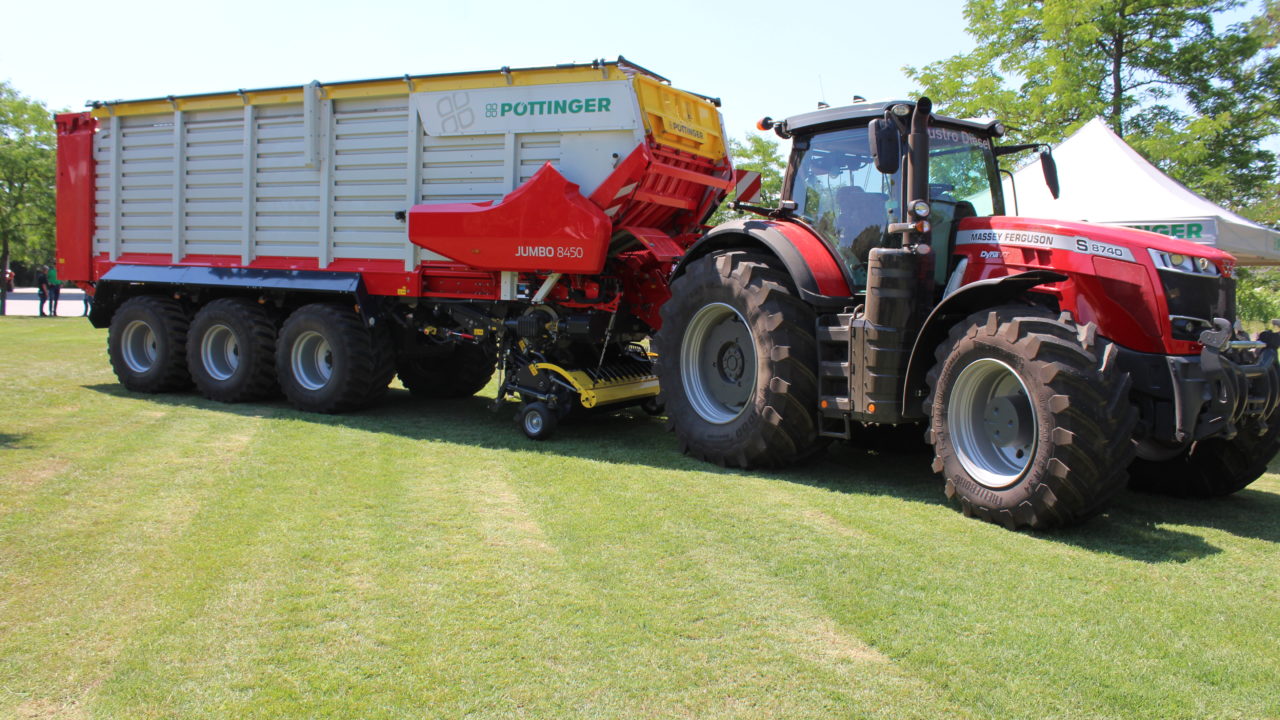This autumn will see Pottinger launch its new range of grassland equipment. Included in the line-up is the new JUMBO 8,000 series of forage wagons.
It is a development that will, no doubt, open the old argument centred on the question – which is the better option, a forage wagon or a self propelled forage harvester?
Pottinger marketing director C.T Truesdell is quick to point out that the company’s new machines can consistently deliver an average chop length of 25mm, even when dealing with the heaviest crops of grass.
“But the forage wagon approach to silage-making has so much more to offer,” he explained to Agriland at the demonstration site in Austria.
“In the first instance they are more economical to use. A fleet of forage wagons ensures that best use is made of all operatives’ time. Less equipment is required to deliver a constant filling of the silo.”
Forage wagons
Truesdell also makes the assertion that forage wagons create less soil compaction issues.
“GPS technologies have many upsides. But one downside is the continuous tracking of heavy machinery along the same locations within fields over a period of time. The end result is enhanced soil compaction-related issues.
“We have undertaken extensive research on the tyres that now feature on the new wagons. Their wider profile, reduced ground pressure, ensures that heavier loads are distributed uniformly.”
The new Pottinger range is coming to market on the back of extensive trial and certification work undertaken at universities and other research centres across Europe.
“Our plan is to build on this commitment for the future,” Truesdell said.
“Independent verification is at the very heart of what Pottinger is all about as a business. We are committed to working more closely with research centres across Europe and the UK in this context.”
Silage quality
But do forage wagons produce better quality silages? This argument has been raging for years.
Pottinger has committed to a series of feeding trials in Austria in order to get a clearer perspective on this matter. But forage wagons do bring greater flexibility to bear when it comes to managing grassland areas on all livestock farms.
By placing a mower on the front of the tractor towing the forage wagon, zero grazing also becomes an option.
There is also little doubt that forage wagons are set to become more versatile in the way that they can be used within all grassland management scenarios.
